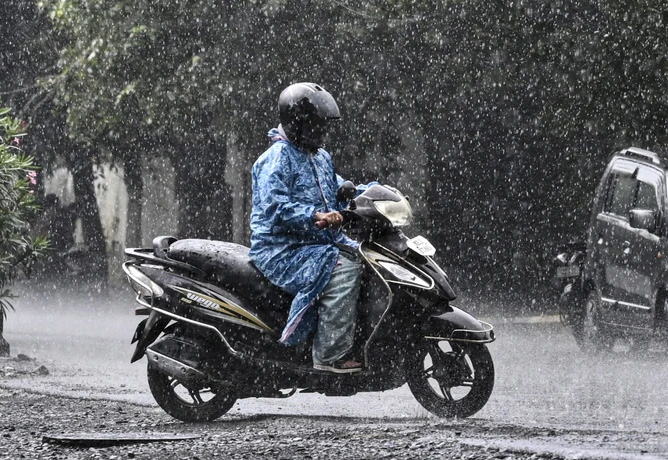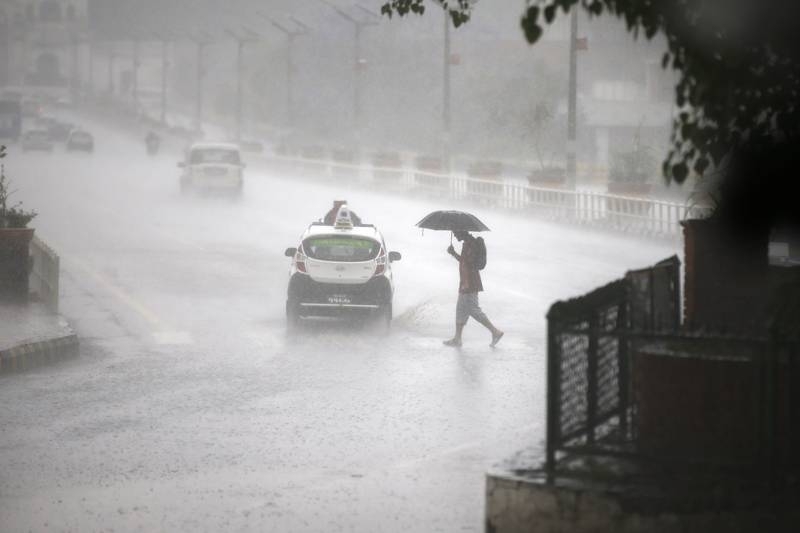One after another, Pakistan endures successive climate disasters

By Waqas Alam Angaria
On the morning of Aug. 15, a cloudburst that poured more than 150 millimeters (6 inches) of rain in one hour triggered a flash flood in the city of Buner, located in Pakistan’s northwestern province of Khyber-Pakhtunkhwa. More than 300 people died after the torrents of boulders and mud washed away homes, hotels, restaurants and other infrastructure.
“The flash flood came from the mountains. In my whole life living in Buner, I never saw any disaster like that. It was horrific,” Tariq Zaman, a resident, told Mongabay by phone. “My friend who was with me that day saw his house submerged under water. He lost 18 members of his family on a single day.” Torrential rain created havoc in other parts of the northern areas beyond Buner as well, as water flowed from the mountains to the downstream areas, destroying localities and neighborhoods.
Climate change is impacting communities worldwide, but researchers say Pakistan is affected by two phenomena: a “compound” climate change effect, a term used by climate scientists to describe multiple climate hazards — such as drought, heat waves, torrential rains and wildfires — that occur simultaneously or in close succession; and also what’s called the “sequential” climate change phenomenon, in which a chain reaction can occur where one climate-related hazard triggers or intensifies a series of subsequent events.
According to recent research published by Frontiers in Climate, Pakistan was the victim of a compounding effect in 2022. To understand the situation, Mongabay reached out to Fahad Saeed, a senior climate scientist associated with Climate Analytics, a nonprofit science and policy institute in Germany. Fahad confirmed the compounding effect and sequential phenomenon in Pakistan. “In 2015, the global temperature rose by 0.9° Celsius [1.6° Fahrenheit], which is now 1.2°C [2.16° F]. Pakistan’s vulnerability is due to its geography. In 1,600 kilometers [990 miles] of latitudinal distance, Pakistan has the [world’s] second-highest peak in the north, to low-elevation land in the south. Any change in global climate impacts Pakistan the most,” Fahad said.
Pakistan contributes less than 1% to global carbon emissions; however, data indicate that Pakistan is one of the most vulnerable to the effects of climate change due to carbon emissions.
In the north of Pakistan lie the mighty Hindu Kush, Himalaya and Karakoram mountain systems, which form the world’s largest nonpolar glacier reservoirs. These are also called the “water towers of the world.” This system stretches to China and India, which are two of the three largest carbon emitters in the world. “It is not necessary that the carbon-emitting countries also face the same impacts, and Pakistan is the best example for the world,” said Waqar Ahmed, an environmental scientist and assistant professor at the University of Karachi.
Meteorologist Anjum Zaigham of the Pakistan Meteorological Department (PMD) said Pakistan is affected by emissions caused by China and India. “The average temperature in the north of Pakistan has risen by 2° C, while this year the average temperature was above 8° C. As a result, GLOF (glacier lake outburst flood) events have become frequent now, and moisture in the air is causing intense rainfall,” Zaigham explained.
A 2024 study indicated that the pace of climate change in the Hindu Kush-Himalaya-Karakoram region was faster than the global average.

In Pakistan’s south, a 1,050-km (650-mi) Arabian Sea coastline stretches across two provinces, Sindh and Balochistan. According to research by Nature India, the Arabian Sea is warming faster than expected. The effect of rapid sea warming is causing alterations in the regional climate, resulting in severe droughts followed by intense rainfall throughout the region. By analyzing the climate patterns of Pakistan over the last 10 years, Mongabay found several climate catastrophes in Pakistan that indicate a potential sequential climate change phenomenon.
In June 2015, Pakistan’s southern cities suffered from the deadliest heat wave in Pakistan to date. More than 2,000 people died, and in Karachi, Pakistan’s largest port city, the death toll reached 1,200 people when the temperature reached 45°C (113°F) with high humidity and no wind activity. “I was returning from my work, and I got stuck in the traffic. I saw people faint in front of me because the heat was suffocating and felt fatal due to running engines,” Rizwan Khan, a Karachi resident, told Mongabay. “Most of the people who died were laborers who did physical labor,” Khan explained.
As the years followed, heat waves became the new normal. “In Karachi, before 2015, the peak temperature used to rise once or twice, but now it has extended to weeks,” said Yasir Darya, founder of Climate Action Centre Pakistan. After the heat, it was catastrophic rain. In 2020, Karachi witnessed a record-breaking rain spell when 230 mm (9 in) of rain in 12 hours submerged the whole city, killing more than 40 people (Karachi’s annual rainfall average is 150-302 mm, 6-12 in). Whole neighborhoods flooded, and the death toll could’ve been worse if it weren’t for the COVID-19 lockdown at the time.
Over the last decade, excessive heat and rain have caused several major and minor floods, not only in flood-prone areas but also in arid and semiarid regions of southern Pakistan. The country suffered from the worst climate catastrophe in the 2022 monsoon, when the provinces of Sindh and Balochistan witnessed unprecedented rainfall and suffered from the floods. August 2022 became the wettest month since records began. In Sindh, the Indus River overflowed and inundated several low-lying areas.
Balochistan, the driest region in the country, experienced a 500% increase in rain in July 2022, the highest level recorded since 1961, particularly in areas that had suffered from severe heat waves and drought cycles in previous years. The rain on the mountains of Balochistan triggered flash floods that traveled downstream along the natural water route, destroying everything in their path. Overall, in the 2022 floods, more than 1,700 fatalities were recorded, and 33 million people were affected, in addition to $40 billion in losses, which was a huge economic blow for Pakistan’s fragile economy. A 2023 npj Climate and Atmospheric Science study indicates there indeed was a connection between China’s and Europe’s heat waves and the intense rainfall in Pakistan that caused floods in 2022.
The impacts of the changes in Pakistan’s climate patterns have become severe and abrupt. The Thar Desert has been affected by severe drought cycles in the past, yet now, rainfall has increased and made it greener. But rain comes with a cost, and that is thunder and lightning. In the 2024 monsoon, 14 people died from lightning strikes and heavy rains, while more than 350 people lost their lives in eight years due to the same phenomenon. “The warmer atmosphere has the capacity to hold more water vapor, and the effect of it is more rainfall and extreme weather,” Fahad explained. “This is the Clausius-Clapeyron effect, and we are seeing this effect in arid regions in Pakistan, including Thar.” While regional studies suggest increasing lightning in parts of South Asia, scientific evidence for the district of Tharparkar (where the Thar Desert is) remains limited. The observed shift from prolonged drought to more intense rainfall nonetheless indicates a change in climate patterns. People of Thar blame the Thar Coal Project for this abnormal intensity in thunder and lightning incidents, while no formal study has been conducted.
Not just that, but melting glaciers, heavy rainfall and a warming sea in Pakistan have now caused a larger threat: sea level rise. Pakistan’s coast is on the verge of unprecedented land loss due to this phenomenon. The Sindh delta is disappearing rapidly, and seawater has gulped 15 out of 17 creeks, sinking millions of acres of agricultural land over the years. The people who were living in the delta are now climate migrants and moving to higher-elevation places like Karachi. The migration could to increase to 2.3 million by 2050. “Compound events are quite specific. They occur at a seasonal or sub-seasonal time scale, while sea-level rise is a slow-onset event, which is different to compounding,” Fahad said.
Climate change is not a new conversation, and prophecies of apocalypse have been around for thousands of years, across cultures. But for Pakistan, the realization of potential collapse rooted in science came very late. Pakistan adopted a climate change policy in 2012 and created a climate change ministry to address the issues of rising temperature, floods and melting glaciers; however, according to a 2024 Transparency International Pakistan publication on climate financing, “The current system needs significant improvement,” with reasons including “incomplete implementation, deep influence of non-climate sector institutions, arbitrary decision-making without strong political commitment, and lack of public participation in policymaking.”
“We are expanding our capacity and making our policy more sophisticated,” Pakistan Climate Change Minister Senator Musadik Malik told Mongabay by phone. “Our policy for adaptation and mitigation requires multilateral funding so we can fight this war. … Since the creation of the loss and damage fund at COP28 … Pakistan has not received any amount,” Malik explained.
“The future of Pakistan is bleak, and on top, the Trump administration wants to extract oil in Pakistan,” Darya of Climate Action Centre Pakistan said. “If that continues, in a few decades, the average temperature of Pakistan could rise by 2°C [3.6°F], and if that happens, there is nothing we could have done.”
“Nothing is impossible, but we need to go to zero carbon immediately,” said Waqar at the University of Karachi.
No one really knows what the future looks like, but one thing is certain: Climate change does not affect every region the same way. Some are vulnerable, while some are on the verge of collapse, and Pakistan is one of the latter. Nevertheless, the compound climate effect and sequential effect in Pakistan need more data and study in order to help people and experts devise region-based solutions — and also to help other regions be cautious before these phenomena hit them.




